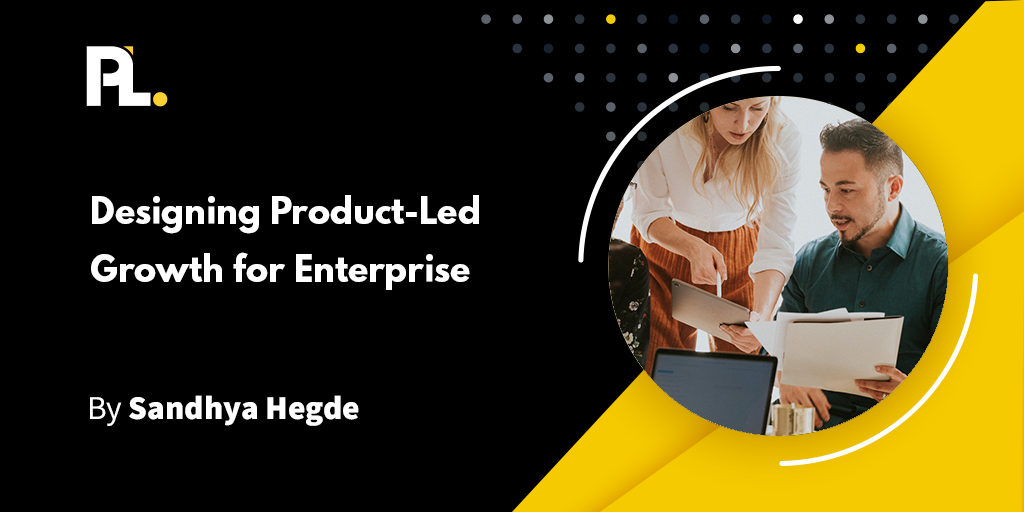
It's no secret 2021 was a massive year for product-led growth.
But where is it headed in 2022?
Read on to hear what 10 of our experts forsee for PLG next year.
Wes Bush (ProductLed)
The days of the "free monopoly" are upon us. Software giants are going to enter adjacent markets with completely free products with no intention to monetize, creating free moats that are going to neuter existing competitors. Competing with free is a tough sell. We've already seen this with companies like ConvertKit, an email marketing platform, giving away their free landing page tool to help their customers grow their marketing list.
In the future, playing small might be riskier than playing big, as your competitors could sustain losses by giving away their tool for free and then monetizing users through a complementary product.
Learn more about freemium here.
Alexa Grabell (Pocus)
We'll see broader Product-Led Sales (PLS) adoption from PLG companies. Leading to less time wasted on unqualified leads and less spammy outreach. With PLS, sales teams are not left blindly targeting every Fortune 500 accounts they can find. Instead, they’ll focus on the best opportunities in their user base by relying on carefully vetted Product Qualified Leads (PQLs) that align to various sales goals – from free to paid conversion to seat expansion.
PQLs will finally become:
a) more well understood (through frameworks and best practice sharing).
b) better defined (through easy experimentation and iteration with no-code tools).
c) operationalized in the sales process.
Read more about layering sales on top of PLG here.
Matt Bilotti (Drift)
Community as a competitive moat. As barriers to create and ship complex and defensible software continues to drop (i.e. machine learning or scalable offerings), community as a growth channel will become increasingly important. We are already seeing community leading the way. The most successful products in competitive markets of the future will build their brands and revenue off organic growth fueled by a highly engaged online group of super fans and supporters.
Join the world's largest product-led growth community here.
Andrew Capland (Delivering Value)
The point of value is moving earlier and earlier in the customer journey. Previously, a new user would need to sign up and go through the user onboarding process to experience the core value of the product. Now, more PLG companies are embedding lightweight versions of their product on their website. Allowing customers to interact with their product, and receive value directly from the marketing site before they sign up. Companies like Unbounce, Postscript, and Profitwell are leading the charge – all have a version of their product you can interact with before signing up.
Read the definitive guide on user onboarding here.
Tristan Pennicott (IBM Cloud)
Attention is the new currency. The days of the paywall are slowly drifting away. In order to expand and enter new markets, we need to be able to loop in potential users. I foresee more companies, both big and small, shifting to leverage free tools and methods to put their product at the forefront of their conversion, acquisition, and expansion strategies.
Read more about encouraging users to upgrade with paywalls here.
Ramli John (ProductLed)
Tools that give sales team product engagement data will gain more traction. At the moment, a huge problem that product-led companies face is silos in data. Empowering the sales team with product engagement data will unlock growth potential and fuel richer conversations with prospects.
Check out this extensive list of 199+ tools for product-led growth.
Karishma Rajaratnam (Vidyard)
We're going to see several departments coming together to create scalable playbooks that drive healthy product-led growth. This will subsequently influence the way teams are structured. We’re going to see the rise of more cross-functional teams and programs that make product usage and adoption happen.
Marketing teams will increase focus on mid/bottom of funnel campaigns to grow user engagement and feature adoption. Product teams will hire product growth talent to drive seamless user onboarding. Data/RevOps teams will work on making product data more easily accessible to the business. Customer success/sales teams will develop sales-assist functions to help free users find success with the product.
Learn more about how teams can work together here.
Michael Vermeulen (Sywdo)
Traditional marketing/sales/support silos will disappear. If the product is actually built to improve the lives of users, the customer focus will be the most important aspect. If you do product analytics well, you will actually listen to your customers. Client onboarding will be the new best thing: the way, pace, and steps to achieve client onboarding will dictate your success.
Learn more about using customer intent to build onboarding that scales.
Matheus Mello (Productboard)
The rise of dedicated Product growth teams to focus on activation. One of the most critical areas of PLG is activation. Due to established silos, and competing organization priorities, cross-functional growth teams have a hard time getting the focus needed to tackle those problems and fully own activation. The need for dedicated product growth teams is becoming more and more visible across SaaS.
Learn how to advocate and implement a product growth team here.
There you have it: where our experts see product-led growth heading in 2022.
Do you agree with everything on this list?
Or perhaps you think there is something we should add.
Let me know in the comments below.





















